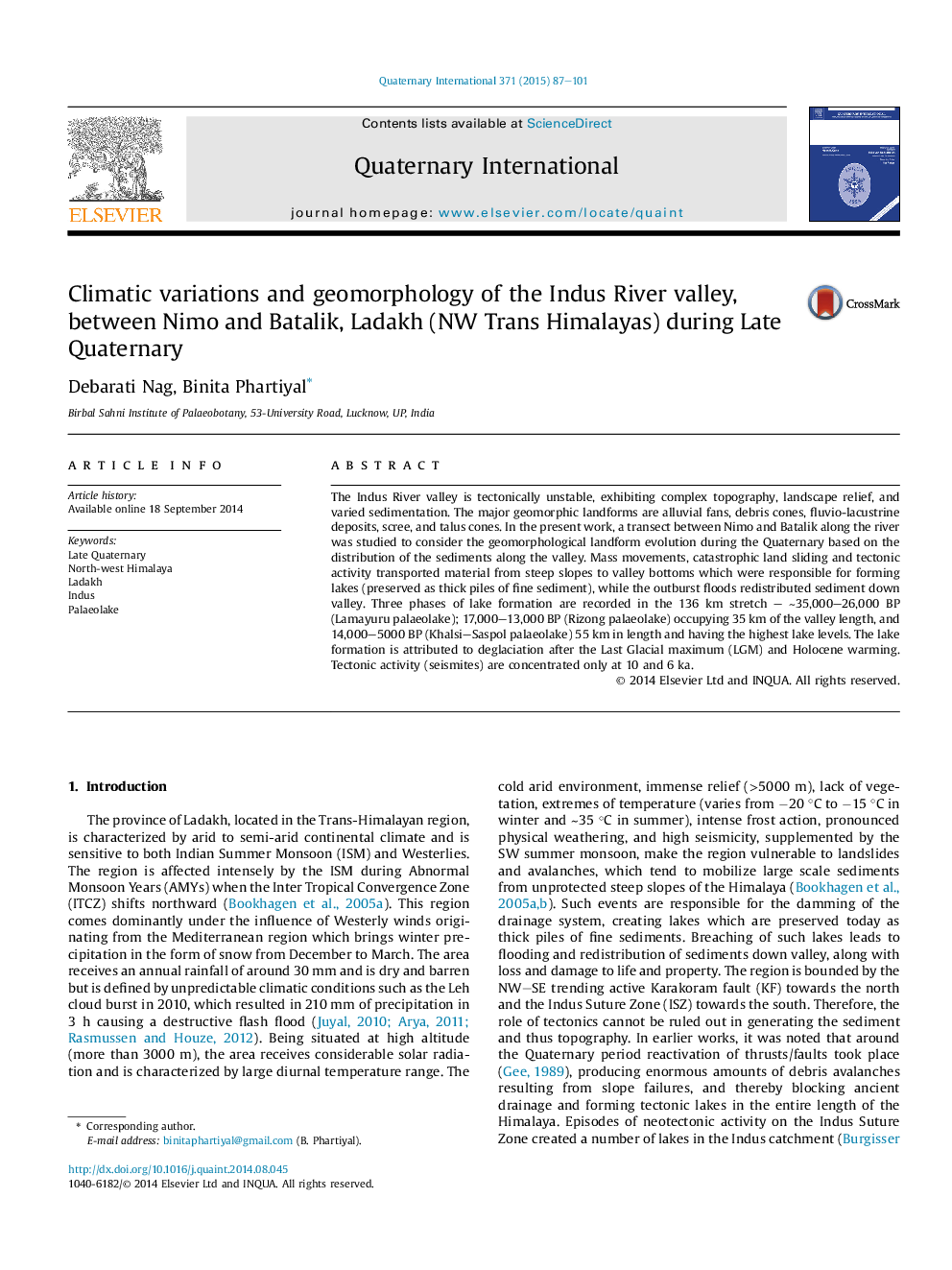| Article ID | Journal | Published Year | Pages | File Type |
|---|---|---|---|---|
| 1040781 | Quaternary International | 2015 | 15 Pages |
The Indus River valley is tectonically unstable, exhibiting complex topography, landscape relief, and varied sedimentation. The major geomorphic landforms are alluvial fans, debris cones, fluvio-lacustrine deposits, scree, and talus cones. In the present work, a transect between Nimo and Batalik along the river was studied to consider the geomorphological landform evolution during the Quaternary based on the distribution of the sediments along the valley. Mass movements, catastrophic land sliding and tectonic activity transported material from steep slopes to valley bottoms which were responsible for forming lakes (preserved as thick piles of fine sediment), while the outburst floods redistributed sediment down valley. Three phases of lake formation are recorded in the 136 km stretch – ∼35,000–26,000 BP (Lamayuru palaeolake); 17,000–13,000 BP (Rizong palaeolake) occupying 35 km of the valley length, and 14,000–5000 BP (Khalsi–Saspol palaeolake) 55 km in length and having the highest lake levels. The lake formation is attributed to deglaciation after the Last Glacial maximum (LGM) and Holocene warming. Tectonic activity (seismites) are concentrated only at 10 and 6 ka.
